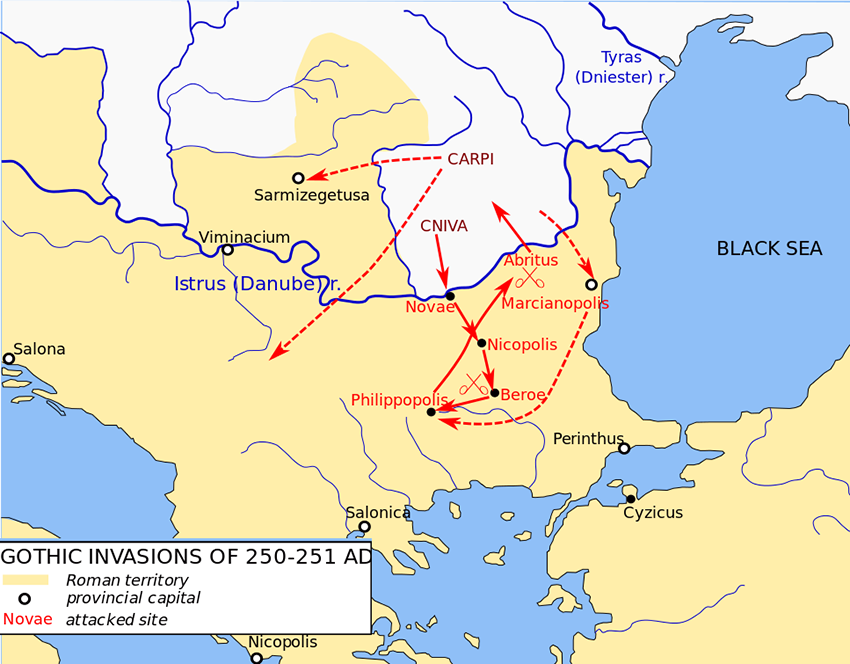The Goths were part of the East Germanic tribes. Their ancient homeland was in Scandinavia. Jordanes, the bishop of Kroton, who claimed to be a Goth himself, states in his work The origin and Deeds of the Getae/Goths (551), that the Germanic tribes left Scandinavia at an undefined time and crossed over to the Baltic shores of what is nowadays Poland. Supposedly there were three ships, on one were the Gepids, on another one the Herules, and on the third one the Goths.
In the second half of the 2nd century a group of Goths left the area around the Vistula River and migrated over the river Dniester to the shores of the Black sea. These Goths are called the Visigoths, which basically means Western Goths, or Thervingi, which means forest people. The other fraction of the Goths migrated over the Western Bug River, Pripyat and Dnepr Rivers and also eventually arrived at the Black sea. These Goths are called the Ostrogoths, which means eastern Goths, or the Greuthungi, steppe dwellers.
They conquered some Sarmatian and Germanic tribes upon their arrival in the south Russian steppes. During the 3th century AD the Goths raided Roman provinces. In 251 they defeated the Romans in the battle of Abritus, while being led by their king Cniva. The Roman emperor Trajan Decius (249-251 AD) was slain during this battle. In 268 the Roman emperor Claudius II (268-270 AD) temporarily stopped the Goths in the battle of Naissus.



The Roman Emperor was nicknamed Gothicus due to this victory. In 271 Claudius’s successor Aurelian (270-275 AD) ceded Dacia (today’s Romania) to the Goths. The Goths started accepting Roman and Greek cultural heritage, among these, Christianity. In 341 Eusebius sent Ulfilas to the Goths as a missionary, who was of Gothic descent. Ulfilas translated the Bible to the Gothic language, laying the foundation for the further conversion of the Goths to Arian Christianity.
